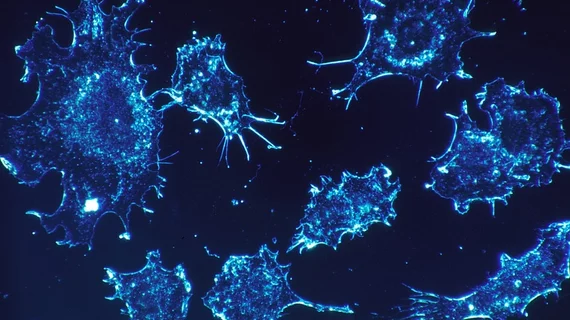New copper PET tracer one-two punch identifies deadly tumors and boosts survival
Two copper radionuclides that target the somatostatin receptor in neuroendocrine tumors can accurately identify such abnormalities and improve survival rates.
That’s according to new research out of Australia published in the December issue of the Journal of Nuclear Medicine. A one-two punch utilizing the PET imaging agent 64Cu-CuSarTate to generate high-quality images, followed by the therapeutic agent 67Cu-CuSarTate to extend lifespan, demonstrated the advantage of using two fractional doses instead of one.
Typically, such tumors are diagnosed and treated using two chemically different imaging-therapeutic agents, the authors noted. This, however, can lead to inconsistencies that make it more difficult to spot and treat the tumors.
Using this new paired approach may make a world of difference to patients, Rodney J. Hicks, MBBS, MD, professor of oncology at the University of Melbourne in Australia, explained.
“Copper radionuclides are beneficial for several reasons,” Hicks added in a statement. “The strong binding of copper within the tumor allows for increased detection of disease, which can serve to limit radiation exposure to normal tissues during therapy. The ability to image at multiple time points with 64Cu-CuSarTate supports prospective dosimetry for therapeutic treatment planning with 67Cu-CuSarTATE, which could potentially offer shorter cycling of treatment, particularly for more aggressively growing tumors.”
The research was conducted only in preclinical mouse models, but PET images produced using 64Cu-CuSarTate at both one hour and four hours post-injection showed very high tumor uptake and excellent tumor-to-background ratios, the researchers noted. And treating tumors with two fractions of either 77Lu-LuTATE or 67Cu-CuSarTate greatly improved survival compared to using a single fractional dose.
“Looking to the future of molecular imaging and nuclear medicine, the chemistry and general concepts presented in this study could be expanded to other peptides that target different receptors, as well as antibodies and engineered antibody fragments,” Paul S. Donnelly, PhD, a chemistry professor at the Melbourne institution, added. “This offers the potential to provide diagnostic imaging using copper-64 to plan individualized treatments with copper-67 agents for a wide range of cancer patients.”

